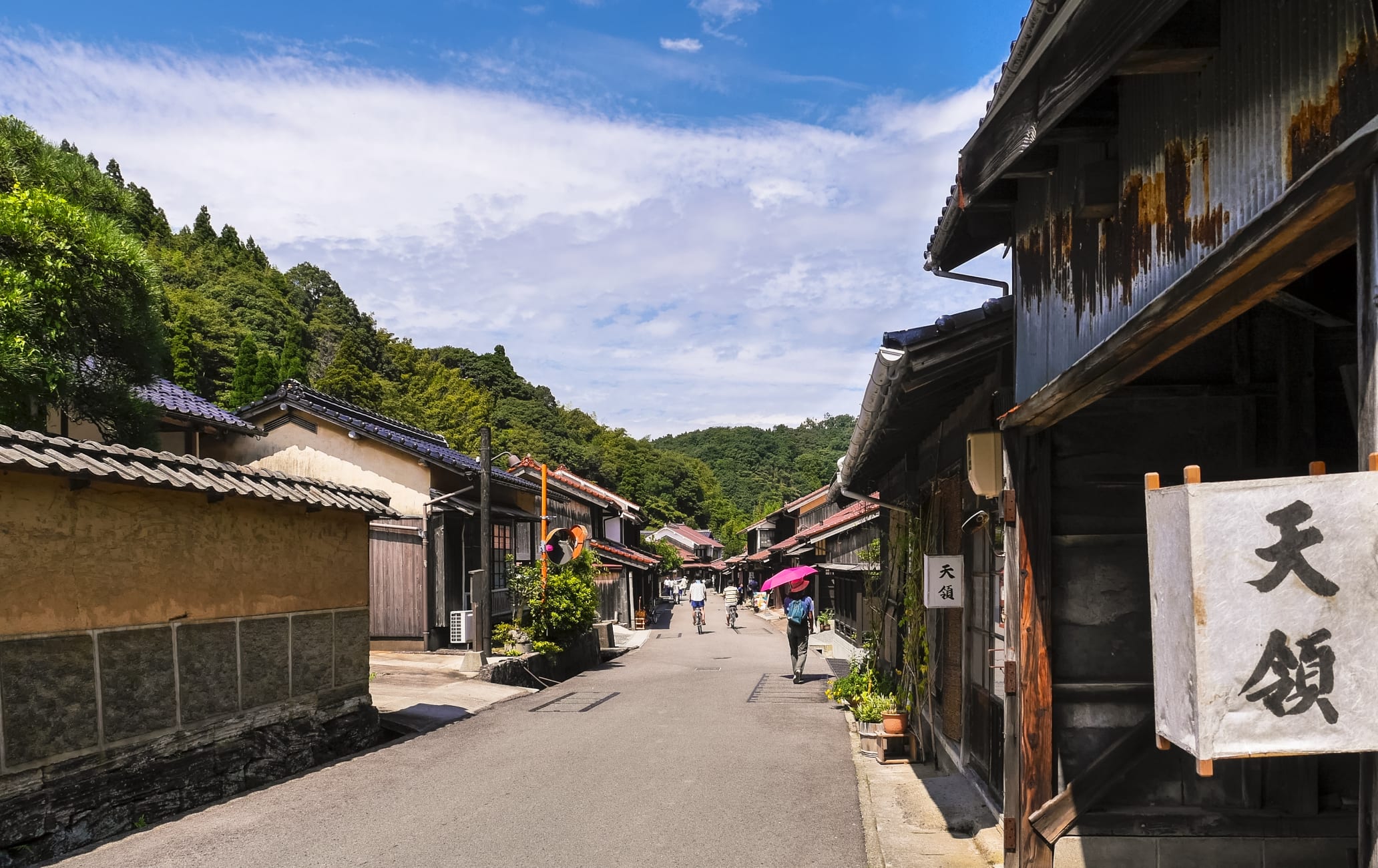A town that administered one of the richest silver mines in the world
The single, narrow, one-kilometer-long street in Omori that winds up the valley seems to have been barely touched by modern times. This is where the government officials, samurai, and merchants lived and worked. It is now one of the best-preserved historic districts in Japan.
How to Get There
Omori is five minutes away from the World Heritage Center or 30 minutes by bus from Odashi Station.
There are bus stops at either end of the town from where you can rent bicycles, some electric-assisted. The town and mine area are closed to motor vehicles.
An exceptionally well-preserved historic town
Long before Omori became a World Heritage site, it was designated as an Important Preservation District for Groups of Traditional Buildings, and therefore, is still preserved as it was 200 years ago. You won't see any 20th-century buildings or power lines here. Many of the temples, shops, and homes lining the streets of Omori have been converted into cafes, gift shops, and galleries.
Walk the streets of old
At the lower end of the town you can visit the former magistrates offices that now house a museum with displays that complement those of the World Heritage Center. Nearby is Kigami Shrine, the main shrine of the town, with a marvelously painted ceiling. As you meander up the road, you will see a grand 200-year-house that belonged to the Kumigai family, the wealthiest family in the town. The luxurious interior is open to the public.
About halfway down the street, you will come to the Kawashima Residence, the only samurai house that is open to the public.
At the southwest end of the town there is a path running two kilometers further up into the mountains to the Iwami Ginzan Silver Mine , passing numerous other sites of interest along the way.

























































